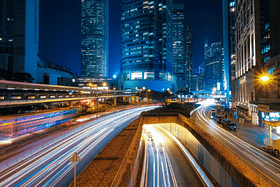The National Housing Bank (NHB) last month announced the operationalisation of the Rs 10,000 crore Urban Infrastructure Development Fund (UIDF).
In the budget speech for 2023-24, the finance minister outlined a vision for Amrit Kaal and stressed seven key priorities of the Union Budget, referred to as ‘Saptarishi’ — aimed at fostering an empowered and inclusive economy.
In line with these objectives, UIDF was introduced — using the priority sector lending shortfall to ramp up urban infrastructure development in tier-2 and tier-3 cities.
Under this initiative, state governments and Union Territories have been asked to submit proposals for projects worth Rs 5 crore to Rs 100 crore by September-end, officials from the Ministry of Housing and Urban Affairs (MoHUA) said.
Financing Cities Through UIDF
The UIDF, following the model of the Rural Infrastructure Development Fund (RIDF), allocates Rs 10,000 crore annually for infrastructure development.
The government established the RIDF in 1995–1996 to fund continuing rural infrastructure initiatives — overseen by the National Bank for Agriculture and Rural Development (NABARD).
The primary goal was to provide loans to state governments and state-owned enterprises to complete ongoing rural infrastructure projects.
Currently, the UDIF covers 459 tier-2 cities with a population ranging from 50,000 to less than a lakh, and 580 tier-3 cities with a population ranging from one lakh to less than a million, as per the 2011 census.
Finance departments of states will be responsible for implementing the fund, which can be used as a loan for 11 types of infrastructure projects.
This includes — setting up of water supply network, sewerage network, solid waste management plant, construction of underpasses and bridges and ‘comprehensive area development’ projects, according to the NHB.
The Conditions Of The Fund
According to UIDF guidelines, mid-sized cities will be developed into regional economic hubs.
States can propose relevant projects within the eligible fund range, and the loan will cover 75 per cent to 90 per cent of the total project cost.
Repayment can be made in five equal instalments within seven years.
Projects must be completed within three to five years, and any delays may lead to categorisation as “non-starter” and possible withdrawal.
The UIDF excludes housing, power, telecom, rolling stock, urban transport, health, and education institutions from its scope.
Encouraging Regulated Growth and Planning
The NHB has announced that both new and ongoing projects can access the UIDF if they align with the Government of India’s urban missions and programmes.
States are evaluating their projects and determining the amount to borrow from the Centre through the UIDF.
The current interest rate on UIDF loans is 5.25 per cent, which is 1.5 per cent lower than the bank rate.
To maximise the benefits of these low-cost funds, states are advised to utilize resources from the grants provided by the 15th Finance Commission and existing schemes.
With the rapid infrastructure development, such as the expansion of the road network in India — tier-2 and 3 cities as well as census towns with urban characteristics, have also experienced unregulated growth, leading to increased strain on existing infrastructure.
The UIDF will offer a stable and predictable source of finance, enabling states to undertake holistic planning to address regional development imbalances.
The ‘comprehensive area development project’ under UIDF allows for five types of works, including transit-oriented development (TOD), heritage conservation, local area decongestion plans, planning greenfield areas, and setting up parks and open gyms.
This model will encourage states to implement urban planning reforms and create future ready mid-sized cities, which are expected to drive economic growth in the years to come.


